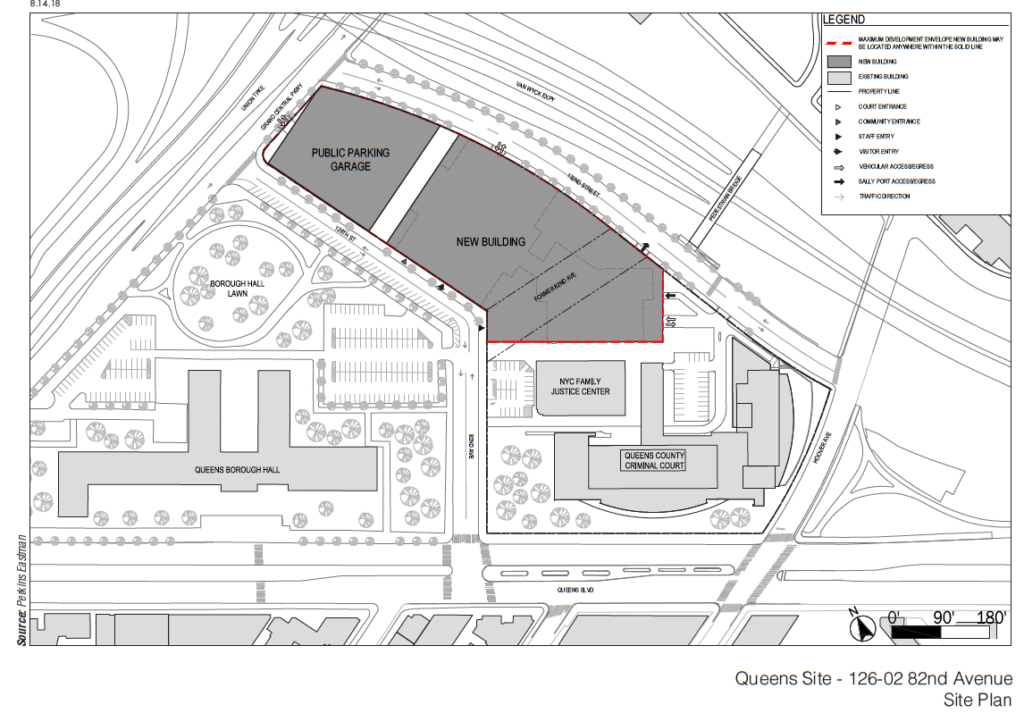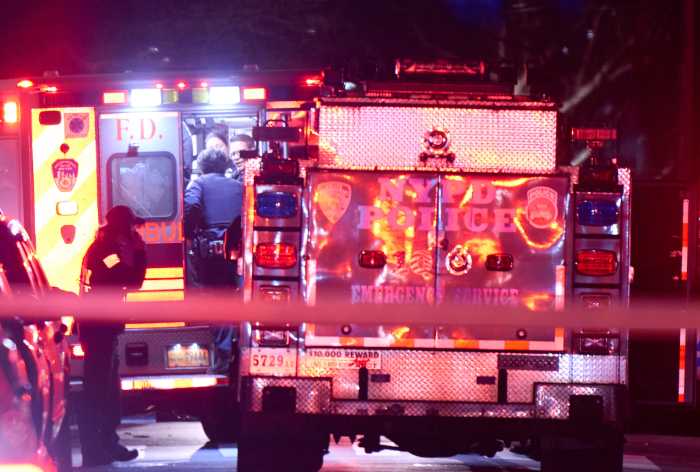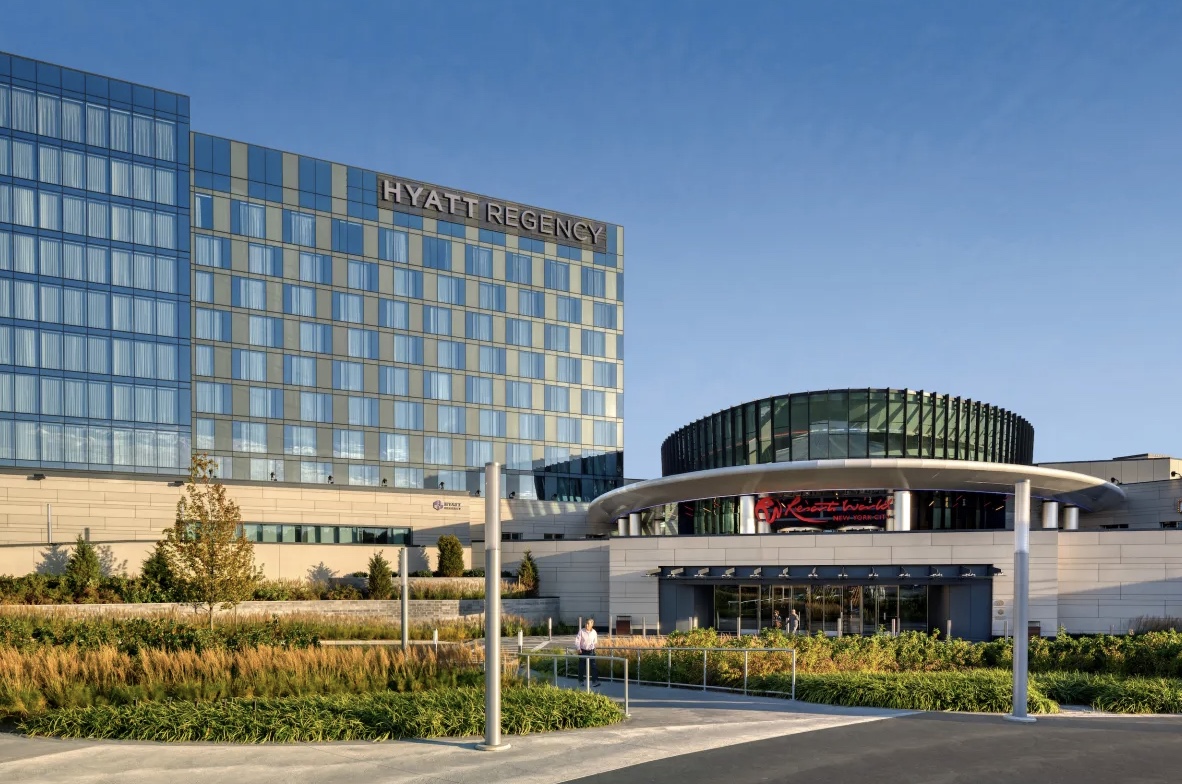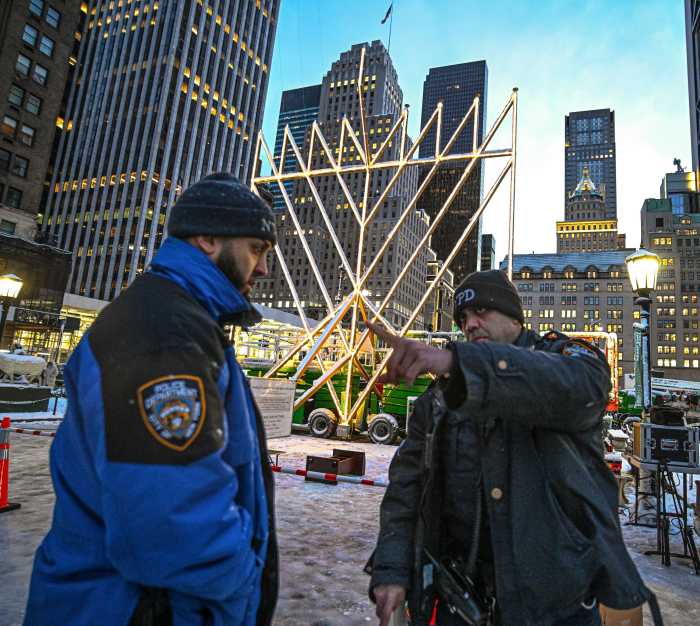Seeking a safer and more community-oriented jail system to replace Rikers Island, Mayor Bill de Blasio unveiled on Wednesday plans to construct four borough-based jails over the next decade — including one in Kew Gardens.
The proposal would redevelop the dormant Queens Detention Complex — located at 126-02 82nd Ave., adjacent to the Queens Criminal Courthouse — and the nearby municipal parking lot (which opened earlier this year) into a corrections center with space for 1,510 prisoner beds. The block of 82nd Street between 126th and 132nd streets would be demapped to allow for the facility’s development.
Construction of this jail and three similar facilities in Brooklyn, The Bronx and Manhattan would enable the city to move forward with its controversial plan to shut Rikers Island down. However, de Blasio stressed that they would be developed in ways that aim to integrate the facilities into the surrounding neighborhoods, promoting the safety of detainees, employees and the general public.
The Kew Gardens plan includes “support space, community facility space, 439 accessory parking spaces within the detention facility, and an adjacent above-ground parking structure providing approximately 676 public spaces,” as noted in the draft environmental impact statement released with the mayor’s announcement. The current municipal lot, which replaced a parking garage, has a little more than 300 spaces.

“We’re taking a big step forward in the process of closing Rikers Island and creating a modern, community-based jail system that is smaller, safer and fairer,” said de Blasio, who announced last year a roadmap to eventually shut down the island of city jails over the next decade. “Now we can move full steam ahead on engagement and planning of our new facilities so we can close Rikers as fast as possible.”
Councilwoman Karen Koslowitz, whose district includes the Queens Detention Complex and municipal parking lot, touted the plan as a potential gain for the community.
“Closing Rikers Island and opening community-based facilities is not only beneficial for New York City’s corrections officers and incarcerated population, but also beneficial for the Kew Gardens community,” she said. “The new facility in Kew Gardens will bring significant economic development and provide hundreds of new parking spaces for the community.”
The four proposed borough-based jails would provide a combined 6,000 beds to meet the needs of an average daily corrections population of 5,000. Currently, the city’s jail population is around 8,200, a 13 percent drop from the previous year, largely due to various criminal justice reforms implemented, such as alternative-to-bail programs and social services aimed at curbing recidivism.
Each borough-based jail will include space “for population-specific housing requirements, such as those related to safety, security, health and mental health,” the mayor’s office noted.
All of the plans, however, are subject to the city’s Uniform Land Use Review Process (ULURP). The local community board (in Kew Gardens’ case, Community Board 9), the Queens Borough President, the City Council and City Planning Commission must each hold public hearings, solicit comments and offer recommendations before final approval or denial of each plan is rendered.
De Blasio noted that the city is also “beginning a comprehensive engagement strategy” that includes “neighborhood advisory bodies with local elected and neighborhood leaders to provide feedback on design, program, neighborhood integration and tackle a range of quality-of-life concerns within the neighborhoods where these sites will be located.”
The city’s Department of Corrections will hold a scoping meeting regarding the draft EIS for the Kew Gardens jail at 6 p.m. on Wednesday night, Sept. 26, at Queens Borough Hall, located at 120-55 Queens Blvd.
In the meantime, residents can submit their feedback on the draft EIS through Oct. 15 by emailing boroughplan@doc.nyc.gov or writing to Howard Fiedler, NYC Department of Corrections, 75-20 Astoria Blvd., Suite 160, East Elmhurst, NY 11370.





































